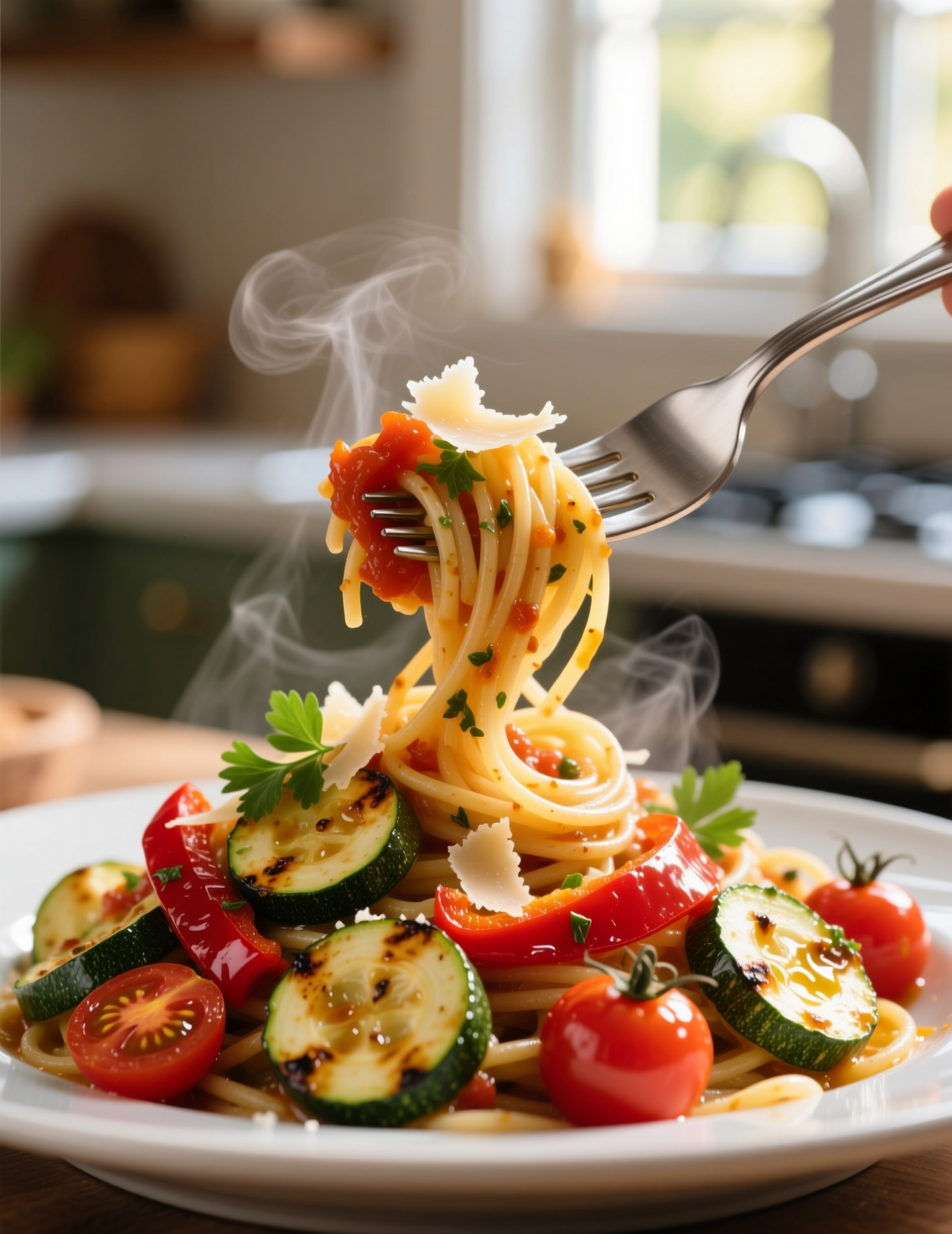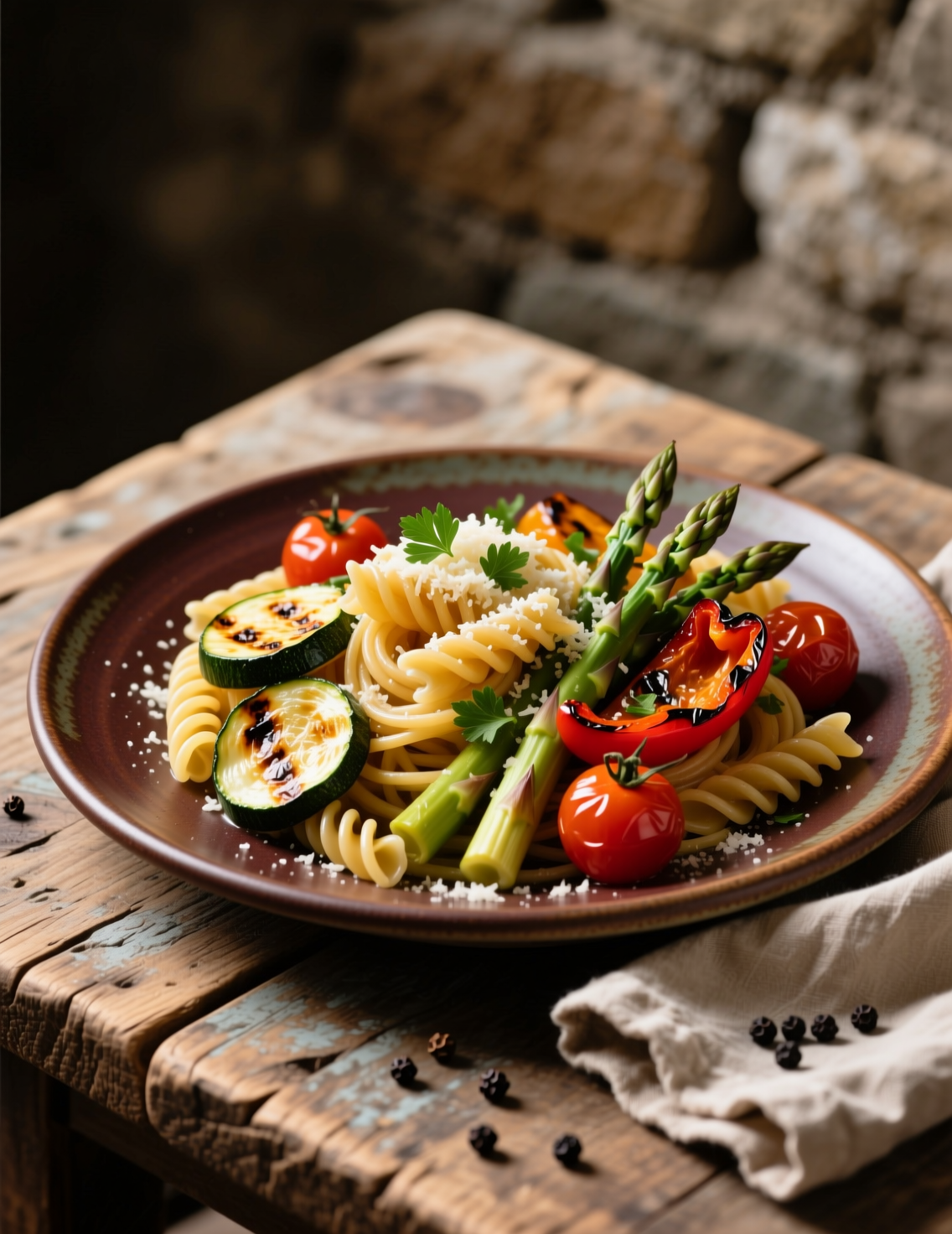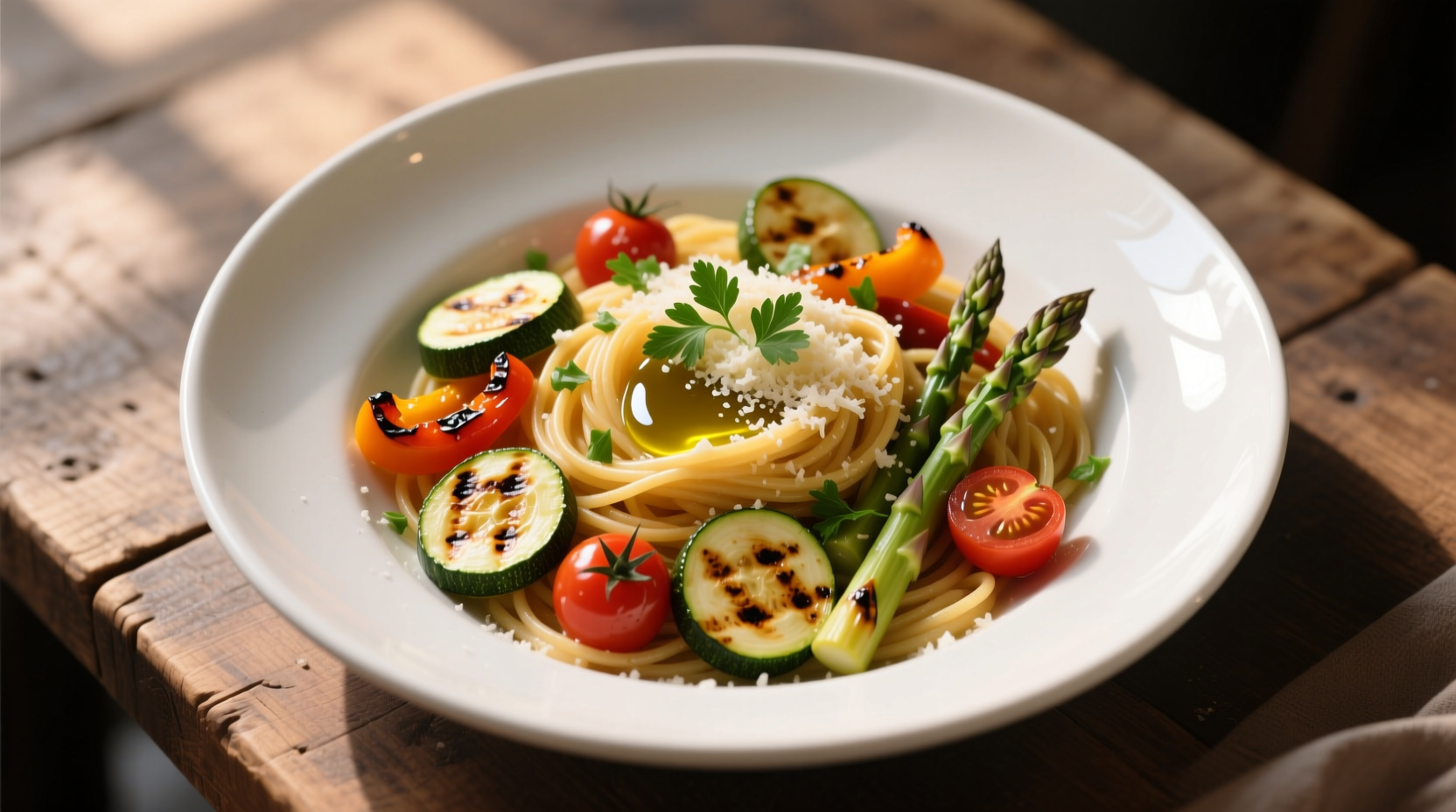If you’re lookin’ for a pasta dish that’s both wholesome and impressively flavorful, roasted vegetable pasta is your answer. It’s the kinda dish that turns simple ingredients into somethin’ that feels gourmet, yet it’s totally doable on a weeknight. This recipe for six serves up rich textures, deep caramelized flavors, and a perfect balance between comfort and sophistication.
Why Roasting Vegetables Changes Everything
Roasting vegetables isn’t just tossing them in the oven—it’s chemistry at work. When you roast, natural sugars in veggies caramelize, creating deep, almost nutty flavors. Bell peppers get sweet, carrots get earthy and tender, and even zucchini develops a slight char that adds complexity. According to a 2022 study in the Journal of Culinary Science, roasting vegetables at 400°F increases antioxidant availability in certain varieties by up to 20%. So, not only does your pasta taste better, it’s slightly more nutritious too.
But here’s the kicker—timing is everything. Over-roasted, and your zucchini becomes a soggy mess. Under-roasted, and carrots taste raw and harsh. The trick is to stagger vegetables based on density. Root veggies like carrots and sweet potatoes take longer; softer ones like zucchini or cherry tomatoes cook quicker. Preheating your oven ensures consistent caramelization.
Ingredients That Make a Difference
For 6 servings, you’ll need:
- 1 lb (450g) of pasta—penne or farfalle works best for holding chunky roasted veggies
- 2 medium zucchinis, sliced into half-moons
- 2 bell peppers, thinly sliced (choose red or yellow for sweetness)
- 1 large carrot, cut into thin sticks
- 1 small red onion, sliced
- 1 cup cherry tomatoes, halved
- 3 cloves garlic, minced
- ¼ cup extra virgin olive oil
- ½ tsp chili flakes (optional but adds nice kick)
- ½ tsp freshly cracked black pepper
- ½ cup grated Parmesan or Pecorino Romano
- Fresh basil leaves for garnish
Optional protein: Add grilled chicken or cannellini beans for a heartier meal. Professionals often suggest tossing in nuts, like pine nuts, roasted lightly, to add texture and an umami hit.

Step-by-Step Technique for Perfect Roasted Veggies
- Preheat Oven & Prep Veggies
Preheat to 400°F (200°C). Line a large baking sheet with parchment. Toss your vegetables in olive oil, garlic, pepper, and a pinch of salt. Make sure everything is evenly coated—uneven oil leads to uneven roasting. - Stagger Cooking Times
Place carrots and bell peppers first—they need about 20 minutes. After 10 minutes, add zucchini and onions. Cherry tomatoes go in last 5 minutes—they burn fast but provide a burst of sweetness. This staggered approach ensures all vegetables hit that perfect caramelization point simultaneously. - Roast Until Golden
Keep an eye on color. You want golden edges and tender insides. Stir halfway through roasting for even browning. Professional chefs often recommend a drizzle of balsamic vinegar in the final 5 minutes—it intensifies flavor without adding liquid.
Cooking the Pasta: Timing is Key
Pasta and roasted veggies should meet at the same time—never let one wait for the other. Cook pasta in generously salted water; it should be al dente. Reserve a cup of pasta water before draining. That starchy water is like liquid gold—it helps the sauce cling to both pasta and vegetables.
For added depth, finish pasta in a pan with a bit of olive oil, garlic, and the roasted veggies. Toss everything together for 2–3 minutes over medium heat. If it looks dry, splash in reserved pasta water until the texture is creamy yet not soupy.
Flavor Building & Seasoning Nuances
Here’s where many home cooks fall short—they don’t season in layers. Season veggies before roasting, then again when tossing with pasta. Add a pinch of chili flakes or smoked paprika for subtle complexity. Lemon zest brightens the dish and balances richness. Fresh herbs, especially basil or parsley, should be added at the end—they lose their fragrance if cooked too long.
Adding cheese? Professional tip: shave Parmesan over the dish, rather than grating, for a more delicate melt and presentation.
Common Mistakes to Avoid
- Overcrowding the pan: Veggies steam instead of roast. Give them space.
- Skipping olive oil: Light coating promotes caramelization and flavor absorption.
- Ignoring pasta water: Without it, the dish can feel dry and disjointed.
- Adding herbs too early: Aromatics like basil or parsley get bitter when exposed to heat too long.
Variations for a Twist
- Mediterranean: Add olives, artichoke hearts, and sun-dried tomatoes.
- Creamy Version: Toss with a splash of heavy cream or mascarpone.
- Vegan Protein Boost: Include chickpeas or tofu cubes roasted alongside veggies.
Experimenting with different textures is key—think soft roasted veggies paired with crunchy breadcrumbs or toasted nuts. The mouthfeel variation is often what makes a dish memorable at the professional level.
Why This Dish Works Every Time
Roasted vegetable pasta balances taste, texture, and nutrition. Each bite delivers a mix of caramelized sweetness, umami depth, and fresh brightness. It’s versatile—great as a main, side, or even meal prep. According to Food & Nutrition Research 2021, incorporating roasted vegetables into meals significantly increases vegetable intake adherence in adults—so you’re not just feeding taste buds, you’re helping health goals too.
Advanced Tips From Culinary Experts
- Use a convection oven if possible; it circulates air and enhances caramelization.
- Salt veggies lightly before roasting; it draws out water and intensifies flavor.
- Finish with acid—lemon juice, balsamic reduction, or even a splash of vinegar awakens the dish.
- Consider layering textures: crispy roasted chickpeas or breadcrumbs for crunch, soft cheese for creaminess.

Plating & Presentation
Even simple pasta benefits from professional plating. Use a large shallow bowl, twirl the pasta with a fork, place vegetables artfully on top, sprinkle cheese and herbs last. A drizzle of high-quality olive oil or balsamic glaze elevates visual appeal. Professionals often garnish with microgreens—they add freshness and a refined look.
FAQs About Roasted Vegetable Pasta
Can I use frozen vegetables?
Yes, but thaw and pat dry to avoid sogginess.
What pasta works best?
Medium shapes like penne, rigatoni, or farfalle hold roasted chunks well.
Can I prep ahead?
Veggies can be roasted a day before; reheat gently with pasta water to prevent dryness.
Is it healthy?
Absolutely, rich in fiber, antioxidants, and essential vitamins; whole grain pasta boosts nutrients.
Can I use frozen vegetables?
Yes, just thaw and pat them dry to avoid sogginess.
What pasta works best?
Medium shapes like penne, rigatoni, or farfalle hold roasted veggies well.
Can I prep ahead?
Roast veggies a day before and reheat gently with pasta water.
Is this dish healthy?
Yes, it’s rich in fiber, antioxidants, and essential vitamins.
Can I add protein?
Absolutely, grilled chicken, tofu, or chickpeas work perfectly.
How do I avoid soggy vegetables?
Don’t overcrowd the pan and roast at high heat for even caramelization.
Should I add herbs while roasting?
No, add fresh herbs like basil at the end for maximum flavor.
Can I make it creamy?
Yes, a splash of cream or mascarpone works beautifully.
How do I prevent pasta from sticking?
Cook al dente and toss immediately with roasted veggies and a bit of reserved pasta water.
Can I store leftovers?
Yes, store in an airtight container in the fridge for up to 3 days.
Conclusion
Roasted vegetable pasta is more than a meal—it’s a masterclass in balancing flavor, texture, and nutrition. From perfectly caramelized vegetables to al dente pasta and thoughtful seasoning layers, every step elevates the final dish. Serve it family-style or plate individually with finesse, and this dish will impress both taste buds and eyes. For professionals or home cooks wanting a reliable, flavorful, and versatile pasta recipe for six, this is it. Remember: roast with care, season with intent, and don’t skimp on textures or fresh herbs—the difference is night and day.

Mariana is a passionate home cook who creates delicious, easy-to-follow recipes for busy people. From energizing breakfasts to satisfying dinners and indulgent desserts, her dishes are designed to fuel both your body and hustle.
When she’s not in the kitchen, she’s exploring new flavors and dreaming up her next recipe to share with the Foodie Hustle community.

